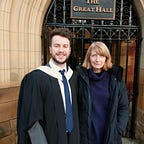Favourite Cartography July 2019
I took the time on my recent holiday to collect my thoughts on a few of the maps I’ve found impressive over this past month.
I’ve tried to keep a note of those that most people will find interesting and a few that were atypical from those normally seen on Twitter.
As always I’ll include links to the original creators where possible including the location where I saw each map.
The following article contains all my own views, not that of friends, family or my work. Feel free to dislike some of the maps I’ve pointed out. I’d love to hear if you’ve found any of the findings interesting.
The Many Faces of Auckland
This is a lovely example of how to map population and ethnicity across a city. The contrasting blue and red populations, depicting White European and Mãori ethnicities respectively, are clearly visible in different boroughs of the city.
Carl drills into why this might be the case in little inserts which add to the value that can be ascertained from the map itself. I think this also shows the value of using the white space to your advantage around the key interest points.
To be critical, I would say for those that don’t know Auckland well it’s missing key landmarks to help orientate the viewer. I feel human geographies should be complemented with traditional features in combination with the terrain map that was used here.
3D adaptation of a nautical chart (New Zealand)
Surprisingly another map from New Zealand that I saw this month. I have honestly never seen a nautical map with this aesthetic that is normally associated with a traditional DEM whilst still retaining the level of detail needed.
Opting from using colour for the underwater features means that traditional characteristics of shipping maps can be included.
Perhaps the only surprising thing about the map is that the country itself isn’t in the centre of the map but as this is merely a recreation in 3D I shouldn’t knock it.
Morphologies of Tourism (Barcelona)
I wanted to include this set of maps on the list as it’s a brilliant use of cartography through a number of maps to provide focus whilst describing answers to questions about the city.
The project was based upon analysing the general trends in the city’s tourism, such as the number of beds in hotels or which areas of the city have more airbnb’s for rent. For those reading through this study, the maps are the side event but brilliantly executed allowing readers to click through each individually.
It appears, from the photos of the art installation, to have captivated the attention of passers by. I particularly like how each map is subtly different but the core themes of buildings, boroughs and point symbols runs throughout.
You can see the full piece here (English version)
Exhibition Road Festival
This map is a piece of cartography lovingly crafted for the Exhibition Road Festival by Mike Hall (who has created a number of other cartographic masterpieces, and I strongly recommend checking out his website). He’s done wonders here with potentially the best road in central London.
What this map does brilliantly are the stylised elements that still allow a reader to use the map as a navigational and informational tool. You can see in the zoomed in picture below that there is a whale drawn into the map itself representing the sculpture currently outside Imperial College London to raise awareness about plastics in the oceans. It isn’t needed to make readers aware of this issue but when walking around the area it will help orientate them. A neat touch.
Despite this, I wasn’t a fan of the random order of points around the map. I imagine this was dictated by the shear number and variety of events but it would have been difficult to find each on the map when quickly scanning.
Increasingly 3D maps are coming to the forefront of GIS and often it is best to maxmise the detail in each building. This map illustrates that detail can be minimised and still have the desired impact.
Looking forward to wading my way through a million and one more maps as the year passes on.
For regular retweets of good (and bad) maps you can follow along on Twitter @RobACollins
